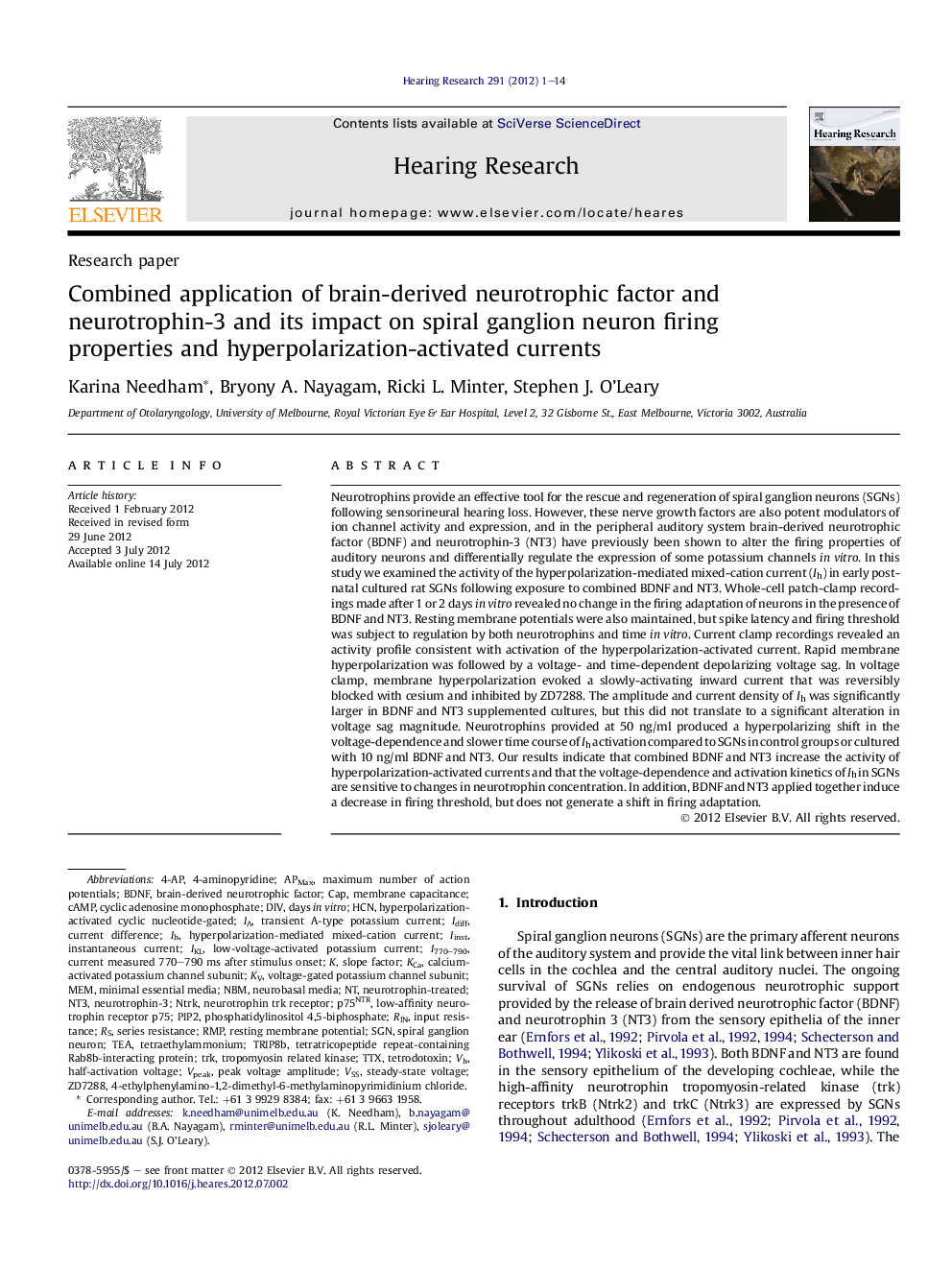| Article ID | Journal | Published Year | Pages | File Type |
|---|---|---|---|---|
| 4355325 | Hearing Research | 2012 | 14 Pages |
Neurotrophins provide an effective tool for the rescue and regeneration of spiral ganglion neurons (SGNs) following sensorineural hearing loss. However, these nerve growth factors are also potent modulators of ion channel activity and expression, and in the peripheral auditory system brain-derived neurotrophic factor (BDNF) and neurotrophin-3 (NT3) have previously been shown to alter the firing properties of auditory neurons and differentially regulate the expression of some potassium channels in vitro. In this study we examined the activity of the hyperpolarization-mediated mixed-cation current (Ih) in early post-natal cultured rat SGNs following exposure to combined BDNF and NT3. Whole-cell patch-clamp recordings made after 1 or 2 days in vitro revealed no change in the firing adaptation of neurons in the presence of BDNF and NT3. Resting membrane potentials were also maintained, but spike latency and firing threshold was subject to regulation by both neurotrophins and time in vitro. Current clamp recordings revealed an activity profile consistent with activation of the hyperpolarization-activated current. Rapid membrane hyperpolarization was followed by a voltage- and time-dependent depolarizing voltage sag. In voltage clamp, membrane hyperpolarization evoked a slowly-activating inward current that was reversibly blocked with cesium and inhibited by ZD7288. The amplitude and current density of Ih was significantly larger in BDNF and NT3 supplemented cultures, but this did not translate to a significant alteration in voltage sag magnitude. Neurotrophins provided at 50 ng/ml produced a hyperpolarizing shift in the voltage-dependence and slower time course of Ih activation compared to SGNs in control groups or cultured with 10 ng/ml BDNF and NT3. Our results indicate that combined BDNF and NT3 increase the activity of hyperpolarization-activated currents and that the voltage-dependence and activation kinetics of Ih in SGNs are sensitive to changes in neurotrophin concentration. In addition, BDNF and NT3 applied together induce a decrease in firing threshold, but does not generate a shift in firing adaptation.
► Firing adaptation of spiral ganglion neurons is retained with combined BDNF and NT3. ► Neurotrophins induce a shift in firing latency and threshold. ► Hyperpolarization-mediated currents increase with BDNF and NT3.
